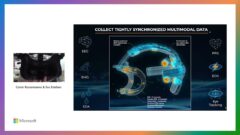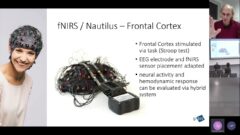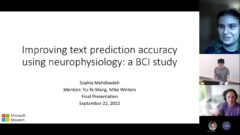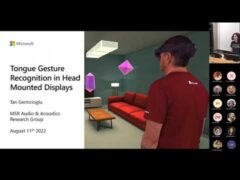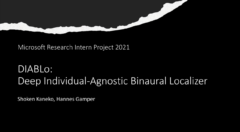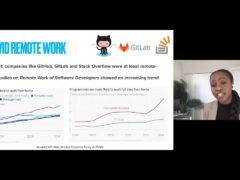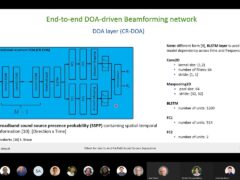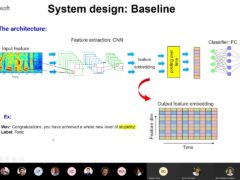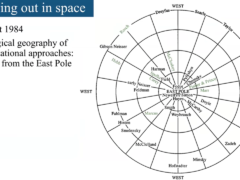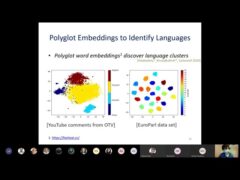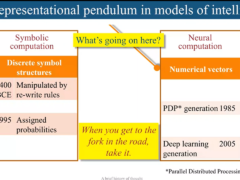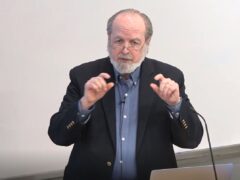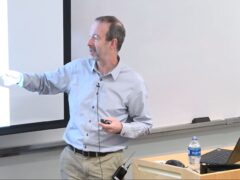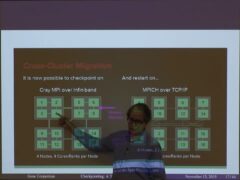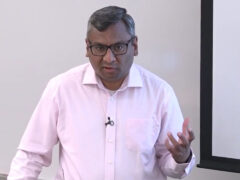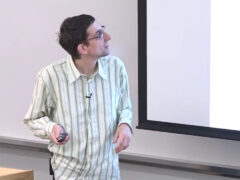Parallel Coordinates: Visual Multidimensional Geometry and its Applications
With parallel coordinates the perceptual barrier imposed by our 3-dimensional habitation is breached enabling the visualization of multidimensional problems. A powerful knowledge discovery process is illustrated on real multivariate datasets and an efficient classifier finds the minimal set of variables needed (features) to characterize a selected subset.
Hypersurfaces in N-space are represented by (N −1) linked planar regions (patterns). This is equivalent to describing the hypersurface by its normal vectors, rather than projections as in standard surface descriptions. These patterns reveal surface characteristics i.e. developable, convexity, non-convexities (i.e. folds, concavities). Non-orientable surfaces (i.e. like the M¨obius strip) yield stunning patterns unlocking new geometrical insights. This representation is preferable for some applications (like ray-tracing) even in 3-D. With this methodology our 3-dimensional experience serves as a laboratory for visually discovering properties, in the spirit of Geometry, from the patterns of 3-D surfaces and then prove their generalization for N-dimensions. The patterns persist in the presence of errors which is good news for the applications including visualization for BIG DATA.
The parallel coordinates methodology is used in collision avoidance and conflict resolution algorithms for air traffic control (3 USA patents), computer vision (USA patent), data mining (USA patent), multi-objective optimization, intelligent process control and elsewhere.
发言人详细信息
Alfred received a Ph.D. in Mathematics and Physics from the University of Illinois (Champaign-Urbana) and continued as a Research Professor. Subsequently, he held research positions at IBM, where he developed a Mathematical Model of Ear (TIME Nov. 74), concurrently having joint appointments at UCLA, USC and later Technion and Ben Gurion University. Since 1995 he is professor at the School of Mathematical Sciences at Tel Aviv University. He was elected Senior Fellow at the San Diego Supercomputing Center in 1996, was Distinguished Visiting Professor at Korea University in 2008 and National University of Singapore in 2011. Alfred invented and developed the multidimensional system of Parallel Coordinates for which he received numerous awards and patents. His textbook “Parallel Coordinates: VISUAL Multidimensional Geometry and Its Applications” published by Springer was praised by Stephen Hawking among others.
- 日期:
- 演讲者:
- Alfred Inselberg
- 所属机构:
- Tel Aviv University
-
-
Jeff Running
-
-
系列: Microsoft Research Talks
-
Decoding the Human Brain – A Neurosurgeon’s Experience
Speakers:- Pascal Zinn,
- Ivan Tashev
-
-
-
-
Galea: The Bridge Between Mixed Reality and Neurotechnology
Speakers:- Eva Esteban,
- Conor Russomanno
-
Current and Future Application of BCIs
Speakers:- Christoph Guger
-
Challenges in Evolving a Successful Database Product (SQL Server) to a Cloud Service (SQL Azure)
Speakers:- Hanuma Kodavalla,
- Phil Bernstein
-
Improving text prediction accuracy using neurophysiology
Speakers:- Sophia Mehdizadeh
-
-
DIABLo: a Deep Individual-Agnostic Binaural Localizer
Speakers:- Shoken Kaneko
-
-
Recent Efforts Towards Efficient And Scalable Neural Waveform Coding
Speakers:- Kai Zhen
-
-
Audio-based Toxic Language Detection
Speakers:- Midia Yousefi
-
-
From SqueezeNet to SqueezeBERT: Developing Efficient Deep Neural Networks
Speakers:- Sujeeth Bharadwaj
-
Hope Speech and Help Speech: Surfacing Positivity Amidst Hate
Speakers:- Monojit Choudhury
-
-
-
-
-
'F' to 'A' on the N.Y. Regents Science Exams: An Overview of the Aristo Project
Speakers:- Peter Clark
-
Checkpointing the Un-checkpointable: the Split-Process Approach for MPI and Formal Verification
Speakers:- Gene Cooperman
-
Learning Structured Models for Safe Robot Control
Speakers:- Ashish Kapoor
-





